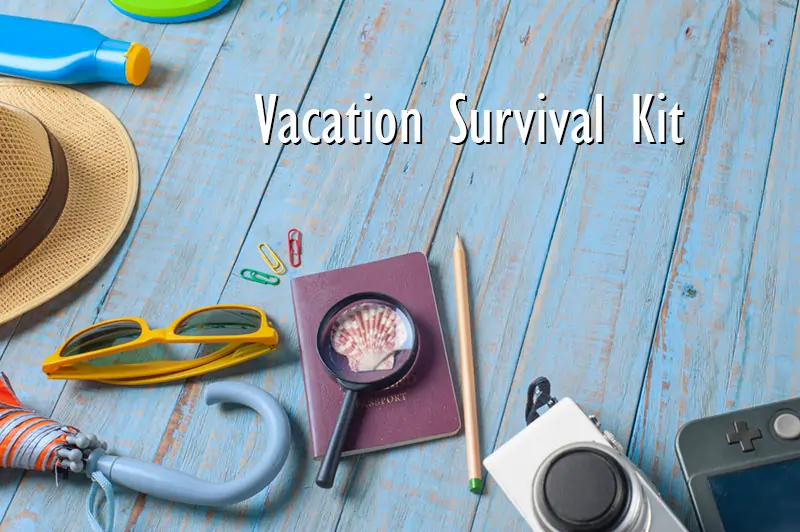How Reliable Internet Access is Changing the Way We Backpack
Backpacking used to mean completely cutting yourself off from civilization. Adventurers today are using technology to explore far-off places. A good internet connection makes the whole trip better. This change is a big deal for how we explore the wilderness. It strikes a balance between the need for solitude and the benefits of staying connected.
Reliable internet access is changing backpacking in ways that previous generations could never have imagined, whether you’re sharing your trip on social media or working remotely from beautiful places.
Essential Connectivity Tools for the Modern Backpacker
Having the right tools can mean the difference between being able to stay connected and being stuck in a digital void. This is what you need to know about the technology that keeps backpackers connected.
Satellite Communication Devices
Satellite devices like Garmin inReach or SPOT Messenger use orbital networks instead of cell towers. This means that you can always go online and talk to people, even in the most remote places. These small gadgets can send texts, find out where you are, and even call for help in an emergency.
Mobile Hotspots and eSIM Solutions
Backpackers who travel to many countries may find it hard to stay connected. With an esim uk solution, you don’t have to buy physical SIM cards in each new country, which makes it easy to move between countries. This technology saves your subscription information digitally, so all you have to do to switch carriers is change a setting on your phone.
Power Solutions for Extended Trips
Without power, even the best tools for connecting to the internet are useless. Solar chargers, portable power banks, and hand-crank generators are now must-have items in any backpacking technology kit. They make sure your devices stay charged while you’re on the road. Some advanced options can now fully charge a smartphone in less than an hour of direct sunlight.
Backpackers can keep their digital nomad lifestyles even when they’re in the middle of nowhere thanks to these tools. This level of connectivity has a big impact on how we plan our trips.
Planning Your Journey with Digital Resources
Having access to the internet has changed the way we plan and research backpacking trips. There is more information available online than ever before, which has made planning trips more thorough and easier.
Mapping and Route Planning
Backpackers can use apps like AllTrails, Gaia GPS, and Google Earth to “scout” places before they get there. These tools give you detailed information about the terrain, the condition of the trails, and even 3D terrain maps that can help you find possible problems or things to see along your route.
Weather and Condition Monitoring
Backpackers are much safer now that they can get real-time weather forecasts and condition reports on their internet-connected devices. Travelers can change their plans if they know about storms, avalanches, or wildfires ahead of time.
Community Knowledge Sharing
There are now huge stores of information where backpackers can share tips, warnings, and suggestions. These include online forums, social media groups, and websites for specific trails. This group of people can help new adventurers learn from the mistakes of others.
These digital planning tools have made backpacking less of a mystery and more of a sure thing, but the thrill of adventure is still there. This planning feature directly makes remote areas safer.
Safety Enhancements Through Connectivity
The most important benefit of reliable internet access for backpackers is probably the huge increase in safety. Being always connected gives wilderness explorers’ safety features that weren’t available to earlier generations.
Emergency Response Systems
Devices that can send emergency signals over the internet have changed how people are rescued in the wild. Backpackers can now send emergency services to the exact GPS coordinates when accidents happen, which greatly speeds up response times in emergencies.
Real-time Hazard Alerts
Real-time alerts about environmental dangers, like flash flood warnings and wildlife sightings, help backpackers make smart choices when the weather changes. These warnings sent through devices connected to the internet have stopped many dangerous situations.
Medical Support Applications
Backpackers can get medical help in remote areas through apps that give first aid advice, help with taking medications, and even telemedicine consultations. When injuries or illnesses happen far from traditional healthcare, this connection can save lives.
Reliable internet access has made backpacking safer, which means more people can enjoy the outdoors who might not have thought it was safe before. This safety net has also made it possible for digital work to grow on the trail.
The Rise of the Backpacking Digital Nomad
One of the most revolutionary effects of reliable internet access is the rise of the “backpacking digital nomad,” or people who travel all the time while still working. This new way of life combines work and adventure in ways that have never been done before.
Mobile Office Setups
Today’s digital nomads have perfected lightweight, portable office setups that make it easy and comfortable to work from anywhere. These include foldable keyboards, portable monitors, and laptop stands. These setups are often lighter than regular camping gear.
How to Backpack with Internet for Work
Successful digital nomads who travel with a backpack learn how to find reliable internet access when they need it. This could mean planning work around stops in town, finding reliable places to connect along trails, or bringing along multiple ways to connect as a backup.
Balancing Work and Wilderness
Backpacking digital nomads have the hardest time keeping work and adventure separate. Setting clear work hours, making digital boundaries, and being fully present when you’re not working all help keep the benefits of being in the wilderness.
The digital nomad lifestyle changes the way we think about work and travel by combining them into one. This blending also affects how we feel about community when we go backpacking.
Social Dimensions of Connected Backpacking
In the past, backpacking was mostly done alone or in small groups, but now that people can connect with each other, the social side of exploring the wilderness has changed. People who have shared digital experiences of wild places come together to form new communities.
Virtual Trail Communities
There are online groups for specific trails, areas, or styles of backpacking that make communities that go beyond just meeting people on the trail. These networks give you support, advice, and friends that make backpacking even better.
Digital Documentation and Sharing
Being able to document and share our backpacking trips in real time has changed how we think about and value our adventures. Backpackers can use photos, trail journals, and video logs to keep records of their trips and inspire others.
Ethical Considerations
When you share more, you have more responsibility. Connected backpackers are now thinking a lot about how to post ethically, like whether to geotag sensitive places or how to show wilderness experiences in a real way.
These social aspects show how having reliable internet access has changed backpacking from a mostly solitary activity to a more social one, even when you’re alone in the woods.
Finding Your Connected Backpacking Balance
Finding a personal balance that works for their goals and values is the most important thing for modern backpackers. There is no single right way to use technology in the wilderness.
Creating Technology Boundaries
Many seasoned backpackers set strict rules for how and when to use technology, like only checking messages at certain times or keeping devices turned off except in emergencies during certain parts of their trip.
Mindful Connectivity Practices
Being deliberate about when and how you connect can make your time in the wilderness better instead of worse. For instance, using connectivity to learn about the natural history of your surroundings can make you appreciate them more instead of distracting you.
Embracing Occasional Disconnection
Even the most well-connected backpackers need to take breaks from technology from time to time. Taking time to be fully present in nature without any digital distractions is still an important part of the backpacking experience.
Today’s adventurers can have the best of both worlds by carefully adding reliable internet access to their backpacking trips. They can enjoy the deep connection with nature that draws us to wild places and the benefits of being connected to the internet.
FAQs
1. Why is reliable internet access important for backpackers?
Having reliable internet access makes things safer by allowing for emergency communications, improves navigation with real-time maps and weather updates, makes it possible to work from home, and lets you share experiences with loved ones, all while still being free to explore the wilderness.
2. What are the best ways to ensure internet connectivity while backpacking?
Satellite communicators are the best way to stay connected in the wilderness, while portable hotspots work well in areas with a lot of people. The most reliable way to stay connected anywhere is to use a satellite device, a smartphone with an eSIM, and a portable power source all at once.
3. How can I balance staying connected with experiencing nature?
Make sure to check your devices at certain times, turn on airplane mode when you don’t need to be connected, and have times when you don’t use technology during your trip. The goal is to use technology to make your time in the wilderness better, not to take over.
The Connected Trail Ahead
Adding reliable internet access to backpacking not only changes the gear lists, but it also changes the way we experience the wilderness. Digital nomad travel and connected exploration have opened up new ways to combine adventure with everyday life. Some people might say that you should completely disconnect, but the truth is that using technology wisely can make you safer, give you more interesting experiences, and make it easier to get to the wilderness.
As connectivity gets better, backpackers will need to be careful about how they use digital tools on their trips. There are exciting things ahead for those who can find a balance between the benefits of having reliable internet access and the timeless value of being in touch with nature.


